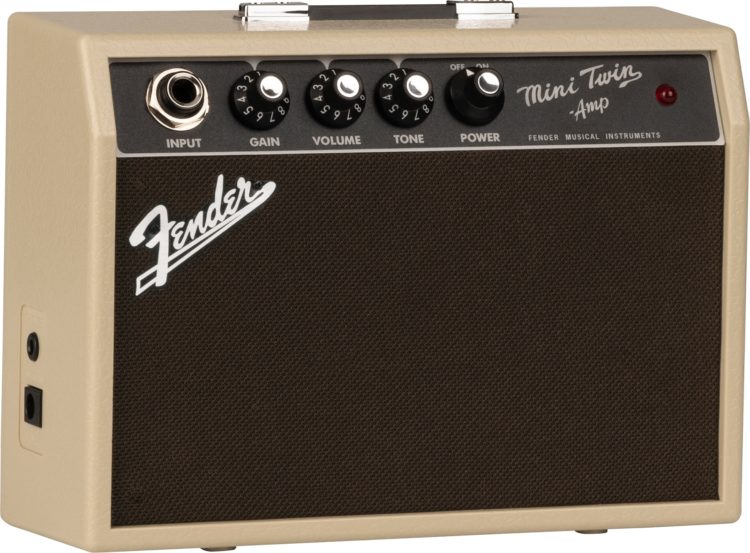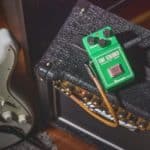I’m not sure if crafting a great guitar tone is an art or a science.
What I’m sure of is that it’s not easy at all.
Every step of the signal has its own controls, and influence in shaping the tone. Even the different interactions between effects can cause alternative outcomes.
Depth, lows, mids, treble, presence, gain, and level, you will find knobs with these labels along the way, and you will probably pretty much have an idea of what they do by now.
But what about “tone” knobs?
What do they do actually?
Tone knobs in amps and pedals are simple circuits that allow players to shape their sound. Think of them as a limited EQ. When you roll down a tone knob you subtract treble from the signal, making it feel as if you were adding lows. Tone circuits have the benefit of preserving signal integrity.
In this article, I will dive deep into how the simplest of controls works in an amp, and tell you all you need to know about it.
After leaving this page, you will have a clearer idea about how to use the tone knobs on your amps and pedals, and how to make the most out of them.
Are you ready to get started?
Let’s go!
What do tone knobs actually do on music gear?
You can find tone knobs in many kinds of different music gear, and their function is pretty much the same among all of them.
A tone knob works as a very simple frequency shaping control, or an elementary EQ setting.
Basically, when your roll down the tone on your amp or pedal, you will be taking treble from the sound.
This, in many cases, might be felt as increasing lows, but actually, that’s just a matter of perception and how the human ear works.
Apart from its simplicity, tone controls have some advantages and fundamental differences when compared to multi-band EQ circuits.
We will discuss them later.
Do tone knobs replace low, mid, and treble?
Yes, tone knobs are meant to replace low, mid, and treble controls, although not directly.
They are an alternative way of shaping the tone, and some players might find them particularly limited.
However, there is a lot of gear out there that incorporates them.
Most units that incorporate this kind of control are rather simple, and they might not even need more granular controls.
You will find that the more complex or advanced you go in the music gear food chain, the tone-shaping controls start getting more complicated.
And that is not a good or a bad thing, it’s just a set of options we players have.
Do tone knobs affect gain?
Tone knobs do indeed affect the gain of the signal, but so do any other EQ circuits, and to a bigger extent.
In fact, the effect on gain is just a technical unavoidability, and not particularly a feature of its design.
The thing that many players and gear manufacturers highlight about the simplicity of tone knobs is that the signal loss generated by them is minimal.
This can’t be said, however for multi-band EQ controls, as they are known for being signal hungry, and in many cases require the amp’s or pedal’s architecture to incorporate additional gain stages to compensate.
What is the best setting for a tone knob?
Setting the tone knob of your amp or pedal is a very personal matter, and I wouldn’t say that there’s a best or worst possible position for it.
The important thing is that you know exactly how it works and that you learn how to listen to the difference it makes.
Start by rolling it down completely. You will get a pretty dark tone. Are you comfortable with it? Is it what you were looking for?
If the answer is no, start opening it a little. You will start hearing how the sound starts to brighten as the circuit starts allowing some top end to shine.
Perhaps, going all the way will sound a bit harsh for you, or maybe you will find out it’s the exact tone you need to cut through the mix in your band.
Experiment, listen carefully, rinse and repeat.
In my case, I usually tend to leave the tone a bit more towards the trebly side than its neutral position, but again, that’s just a matter of personal taste.
Why do some amps have tone instead of traditional EQ?
Many manufacturers, especially of lower gain amps, decide to put a tone control instead of a multi-band EQ circuit to avoid signal loss.
You see, as I mentioned earlier, more complex circuits tend to degrade the signal and require extra gain stages to be added to compensate.
The thing is that adding extra gain stages takes from the “feel” or “touch” of the amp, particularly if we are talking about a tube unit.
Valve purists might argue that they prefer the simplicity of a single-tone knob that allows their beloved tubes to shine brighter and enables them to be more in contact with this central part of the amp.
For higher gain gear, it’s rarer to find tone knobs, since players have always preferred more delicate and specific controls to tame the beast distorted sounds they can produce.
Are amps with only a tone control worse?
Amps with only a tone control for shaping their sound are not necessarily worse, and quite actually, on the contrary, can be considered even more appealing for tone purists.
As I mentioned earlier, single-knob tone circuits take less from the signal and allow for the true output of the tubes to exist in its full extent.
But, of course, for more avid tweakers, having a single control to shape the tone can be torture.
It all boils down to a matter of opinion and preference, as with many other gear-related things.
The only thing that’s important, as a player, is that you get to know, at least on a high level how different things work and why they exist.
On that note, I hope you found this article useful, and now it’s time to start playing with that tone knob that haunts you.

Hello there, my name is Ramiro and I’ve been playing guitar for almost 20 years. I’m obsessed with everything gear-related and I thought it might be worth sharing it. From guitars, pedals, amps, and synths to studio gear and production tips, I hope you find what I post here useful, and I’ll try my best to keep it entertaining also.





